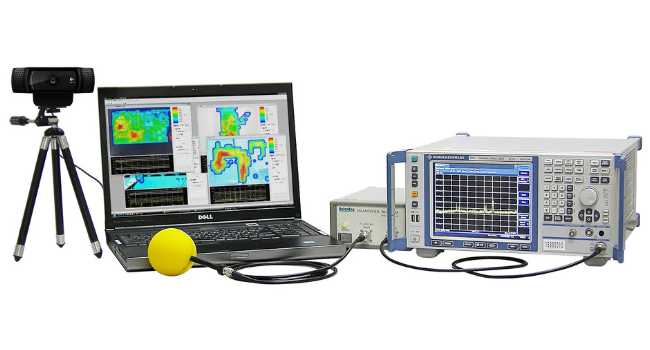General purpose spectrum analysers like the Rigol DSA series can be used to test the deviation of an FM signal.
In this example, we are going to measure the FM deviation of a 10MHz FM signal with a DSA815. This is Rigol’s 1.5GHz spectrum analyser.
NOTE: We are starting from Factory default settings. See the User’s Guide for the instrument you are using to learn more about restoring factory defaults.
1. Set the center frequency of the analyser to the carrier frequency of the FM signal.
Press FREQ > Press Center Freg > set Center Frequency using the scroll wheel or keypad
2. Set the Span to cover the expected frequency deviation of the input signal.
Press SPAN > press Span > set using the scroll wheel or keypad
3. Set the resolution bandwidth (RBW) to provide the resolution that is required for the test.
Press BW/Det > Press RBW > set using the scroll wheel or keypad
4. Enable a second trace type as Max Hold. We will leave trace 1 (yellow) as a
Clear Write type. This will display the input values in “real time” and trace 2 (purple) will provide a histogram of the max values achieved for all scans.
Press Trace/P/F > Select Trace 2 > Set Trace Type to Max Hold
5. Let the instrument scan for a period of time long enough to build a complete envelope of the modulated signals frequency deviation.
The DSA815 has 10 divisions on the display. The span in this example is 20kHz. So, each division is 2kHz. In this example the FM deviation is approximately 2kHz.
Home / Knowledge Base / Knowledge Base Spectrum Analysers / Knowledge Base DSA800 Series / How do I measure FM Deviation with a DSA?
How do I measure FM Deviation with a DSA?
Posted on: December 16th, 2020 by Doug Lovell
Product Categories
AC Power Supplies / Frequency ConvertersDC Power Supplies
DC Electronic Loads
Test & Measurement
Safety Testers
EMC
Soldering Irons / Test Tools
Manufacturers
Rental

Service & Support
AboutContact
Newsletter
Service Returns Form
Returns Policy
Terms and Conditions
Privacy Policy
Shipping & Delivery
My account


Copyright © 2024. All rights reserved by Telonic Instruments Ltd
Website operated by Jumping Giraffe Ltd. Jumping Giraffe Ltd is not responsible for content on external websites.

































































































 FREE SHIPPING £75+
FREE SHIPPING £75+
 CELEBRATING 50+ YEARS
CELEBRATING 50+ YEARS
 PRICE MATCH GUARANTEE
PRICE MATCH GUARANTEE

